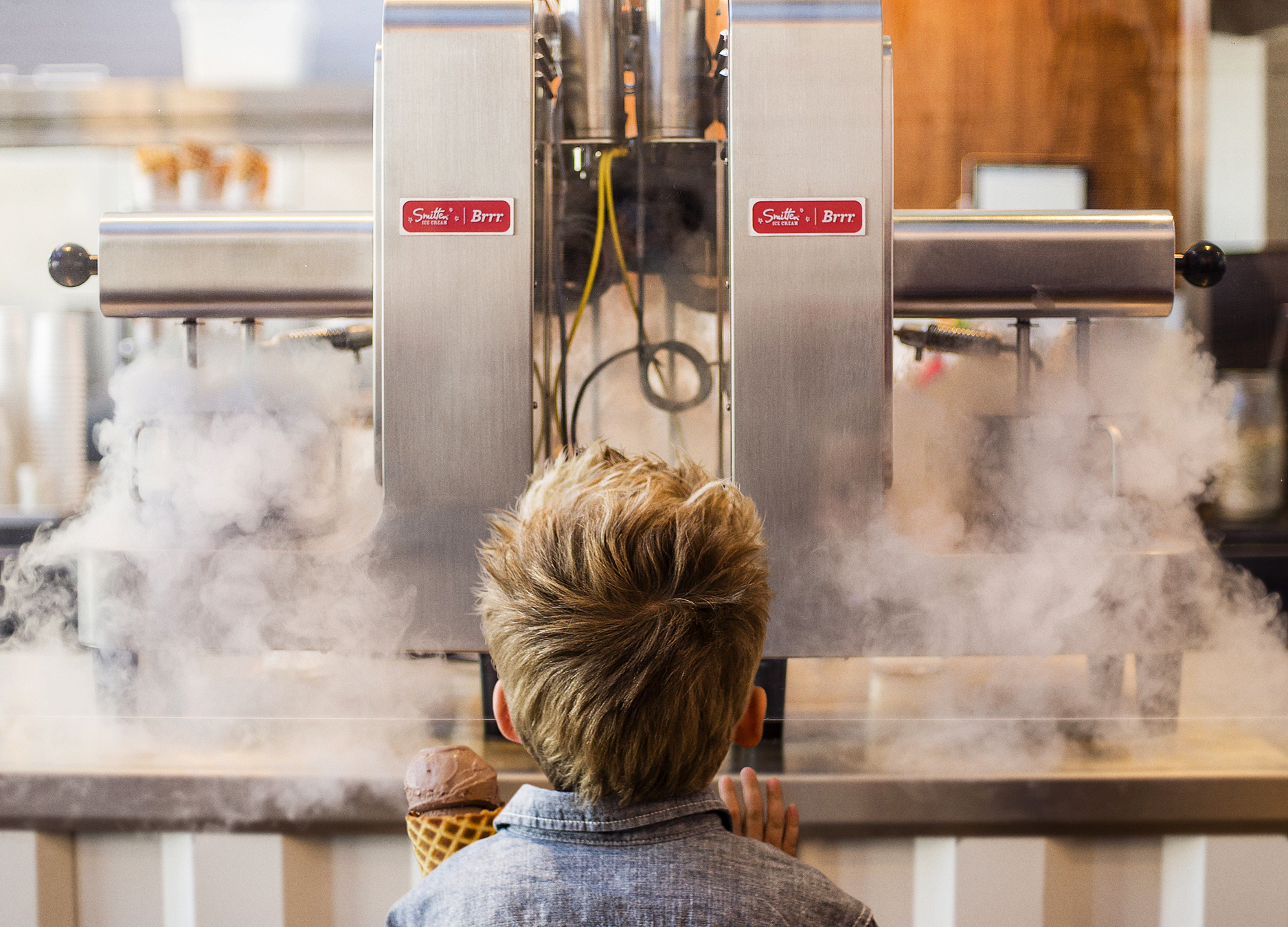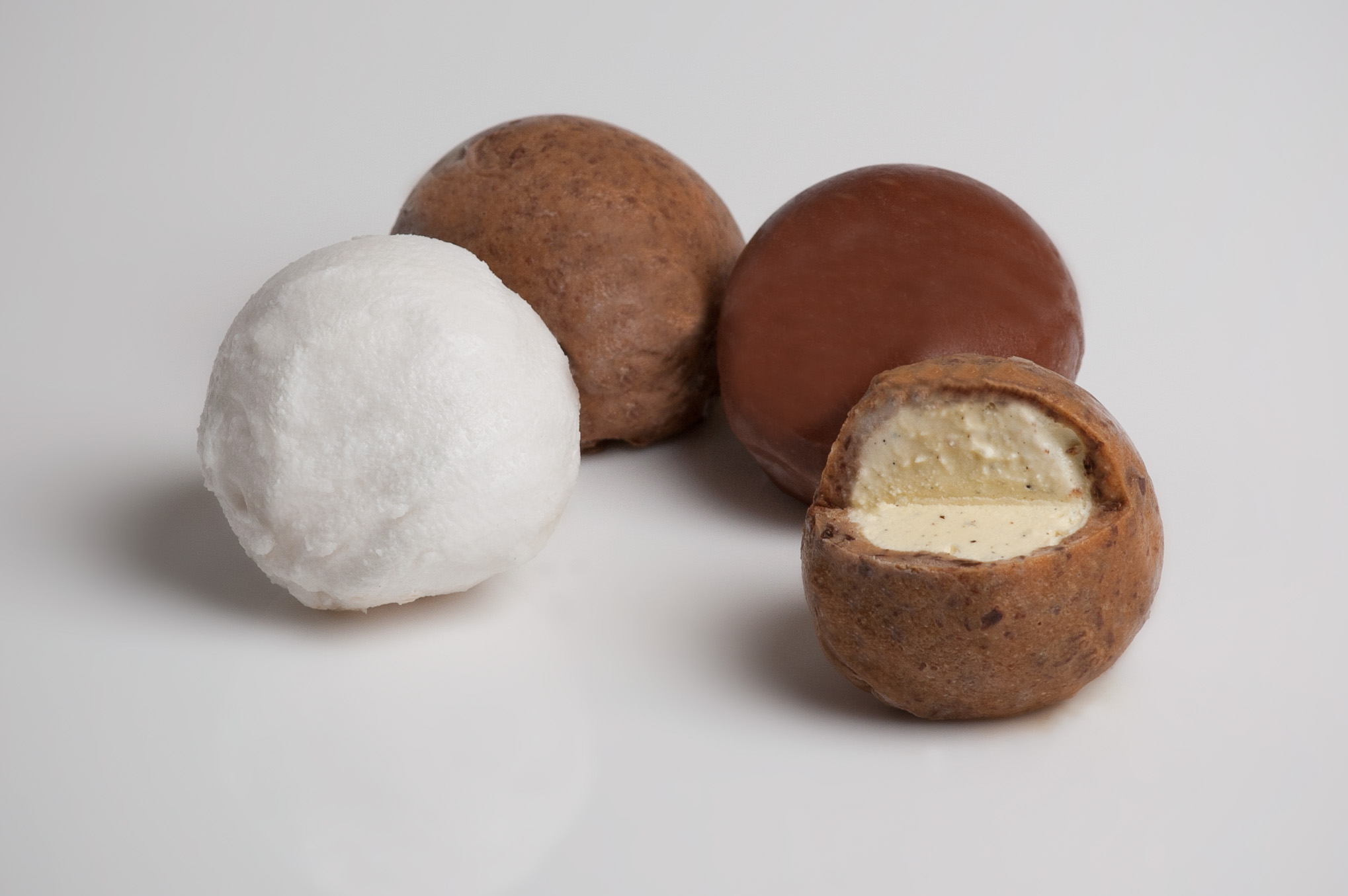As the old saying goes, if it ain’t broke, don’t fix it, right? Well, we’re pretty sure that doesn’t apply to ice cream. It’s already, by many accounts, the perfect food, so it certainly doesn’t need “fixing” per se, but we’re completely open to the idea that it could be made even better.
Here, a look at three current projects that are shaking up the ice cream world — and potentially altering the future of everybody’s favorite frozen treat.
Ice cream that’s been 3D printed
When faced with an assignment to develop a new and innovative technology in 3D-printing, a group of MIT students decided to think a bit differently from their classmates.
“Everyone else was printing composites and resins and none of that was very tasty,” says Kyle Hounsell, now a recent MIT graduate, who teamed with fellow students to think of some edible options for the project. Eventually, he and fellow students Donghyun Kim and Kristine Bunker decided they’d try to 3D-print ice cream — and it ended up working.
The team took an ordinary off-the-shelf soft-serve ice cream machine and then attached it to a Solidoodle 3D printer.
“The technology is called fused deposition modeling,” Hounsell explains. “Basically what you do is you put down the first layer of whatever you’re doing, be it plastic or ice cream or chocolate. You extrude your first layer from this nozzle — it’s sort of like if you had a hot glue gun and you put it down on a table and made a ring, and by the time you got around to the start, you’d move the head up a little bit and go around again. And the first ring you printed has solidified, so it’s more structurally stable, but when you go back around, you extrude new stuff which melts to it and becomes part of it.”
That’s the process you’ll see in the video above. You might notice that the ice cream looks a bit runny, but that’s only because the team had to keep the machine’s door open to capture the video. To make sure the ice cream solidified, the students added a nozzle to sprays liquid nitrogen onto the freshly-printed layers.
The next step, Hounsell says, is to file a patent and figure out what the future of 3D printed ice cream could hold.
“Novelty would be a strong factor. I feel like you could just plop one of these down in a Target or something in a glass-walled freezer and sit there and watch,” he says. “Watching 3D printers work is mesmerizing. At least to me.”
Ice cream that’s made to order with liquid nitrogen

In the heart of San Francisco sits Smitten Ice Cream, where every batch of ice cream is made to order, on the spot, using a high-tech machine called Brrr. This apparatus, which took years to develop and patent, produces what Vogue called “arguably the freshest, if not the best, ice cream on earth.”
The key ingredient? Liquid nitrogen.
“The gist is that the faster you freeze ice cream, the smaller the ice crystals can be, and the smaller the ice crystals, the smoother the texture,” Smitten founder Robyn Sue Fisher says. “To freeze really fast, you freeze really cold. So liquid nitrogen, being negative 321 degrees Fahrenheit, really fits that bill.”
Making ice cream this way means you can produce smooth, dense, tasty ice cream — and it also means you can cut out emulsifiers, preservatives and stabilizers, instead using fresh, local ingredients.
“The whole impetus of me starting the company is just that I was getting kind of of grossed out by looking at the back of ice cream cartons and realizing how many ingredients were in the product that I couldn’t even pronounce,” Fisher says.
Fisher admits that making ice cream with liquid nitrogen is nothing new — but other ice cream shops tend to do this with a basic kitchen mixer, and without a carefully engineered machine, it’s difficult to get the right texture every time. Plus, customers get to watch the machine in action as it churns their ice cream in a whirring, cloudy haze.
For now, Smitten has four locations around the Bay Area. While Fisher doesn’t have plans to take over the world, if this ice cream is truly as delicious and fresh as it looks, you never know.
Ice cream served inside an edible shell

These golf ball-sized ice cream spheres are designed to be easy to eat, but they’ve also got an eco-friendly purpose: eliminating wasteful food packaging. They’re called WikiPearls and they were developed by Harvard biomedical engineering professor David Edwards, who was inspired by foods like grapes and coconuts that essentially come with built-in packaging.
But of course, this is still ice cream we’re talking about — so taste is a priority.
“For a new food form to be really successful, it has to be really good and give benefits that people are looking for in food,” Edwards says. “So the packaging is a great thing but from a consumer point of view, it just needs to be really great.”
The edible skins are made of natural food particles that are bound together with nutritive ions to form a soft skin that keeps the ice cream inside cold for several hours. You can throw them inside a Thermos and carry them with you throughout the day, popping them into your mouth when you need a snack. (Portion control, anyone?)
For now, WikiPearls are sold at a little shop in Paris, but Edwards says they’ll soon be available in the U.S. at Cafe ArtScience opening in September in Cambridge, Mass. Flavors are fairly standard (mango ice cream with coconut skin, chocolate ice cream with hazelnut skin) but Edwards says some more eccentric flavors — like foie gras ice cream with an onion skin — are coming this fall.
Frozen yogurt in WikiPearl form exists too, if you’re into that sort of thing. They’re a bit smaller — about the size of a grape — and can be found at a few Whole Foods locations around New England. (As we all know, though, frozen yogurt is great, but it can’t really replace the true star of the show.)
While Edwards hopes that WikiPearls will one day be the new normal of ice cream, he’s also got plans to expand this technology into other culinary realms. He’s already created versions including cheese, fruits and vegetables — and while we’re not sure how receptive consumers will be to those, we do think the ice cream balls could be a hit.
More Must-Reads from TIME
- Cybersecurity Experts Are Sounding the Alarm on DOGE
- Meet the 2025 Women of the Year
- The Harsh Truth About Disability Inclusion
- Why Do More Young Adults Have Cancer?
- Colman Domingo Leads With Radical Love
- How to Get Better at Doing Things Alone
- Michelle Zauner Stares Down the Darkness
Contact us at letters@time.com



